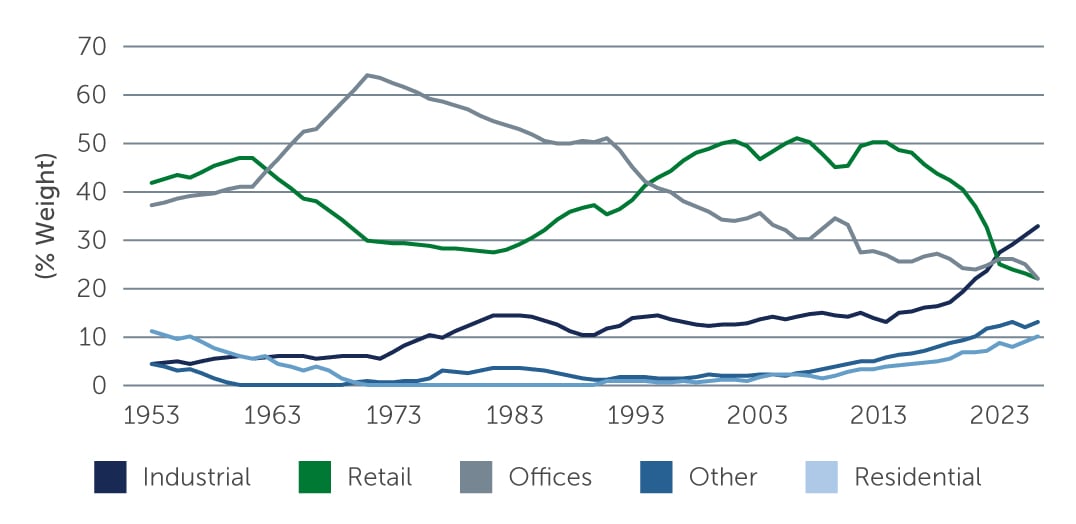Shifting Institutional Property Portfolios: Evolution or Revolution?
From shifting demographics to the adoption of new innovations, long-term societal changes provide strong clues to how institutional property portfolios will likely restructure over the next decade.
Investment Decision-making Reflects Societal Change
The composition of institutional investors’ property portfolios has dramatically changed over the past few decades. This is a reflection of wider societal shifts, given that the property industry plays a key role in accommodating changes to how we live, work and play.
In particular, long-term social changes including shifting demographics, the adoption of new innovations and the emergence of societal trends such as ESG all have a major influence on investors' objectives—and in turn potential investment outcomes. Specifically, the three key objectives shared by most investors are:
- Expand the investment universe (as dictated by the supply of suitable investments).
- Seek enhanced returns (whether by total, income, capital, or risk-adjusted returns).
- Reduce portfolio risk (by increasing diversification).
Evolution or Revolution?
It’s widely perceived that the composition of property portfolios is currently undergoing unprecedented change. While it is true that the range of investable asset types and property sectors is wider than ever, the data suggests an ongoing evolution, rather than a revolution.
In the U.K. property market for example—where the data is robust and covers a long-term period—like many other developed economies, a shift toward the service sector from the 1960s to 1990s occurred with a corresponding rapid acceleration in finance, business administration and professional jobs. The office sector typically accounted for 50-60% of investment portfolios back then (Figure 1). The corresponding de-industrialization of the U.K. economy over the same period is not reflected in property portfolios because these specialized and bespoke industrial plants were owner-occupier, not leasable and therefore never part of the investable institutional property universe.
Figure 1: Shifting Composition of U.K. Property Portfolios
 Source: Jones 2013. MSCI 2024.
Source: Jones 2013. MSCI 2024.






